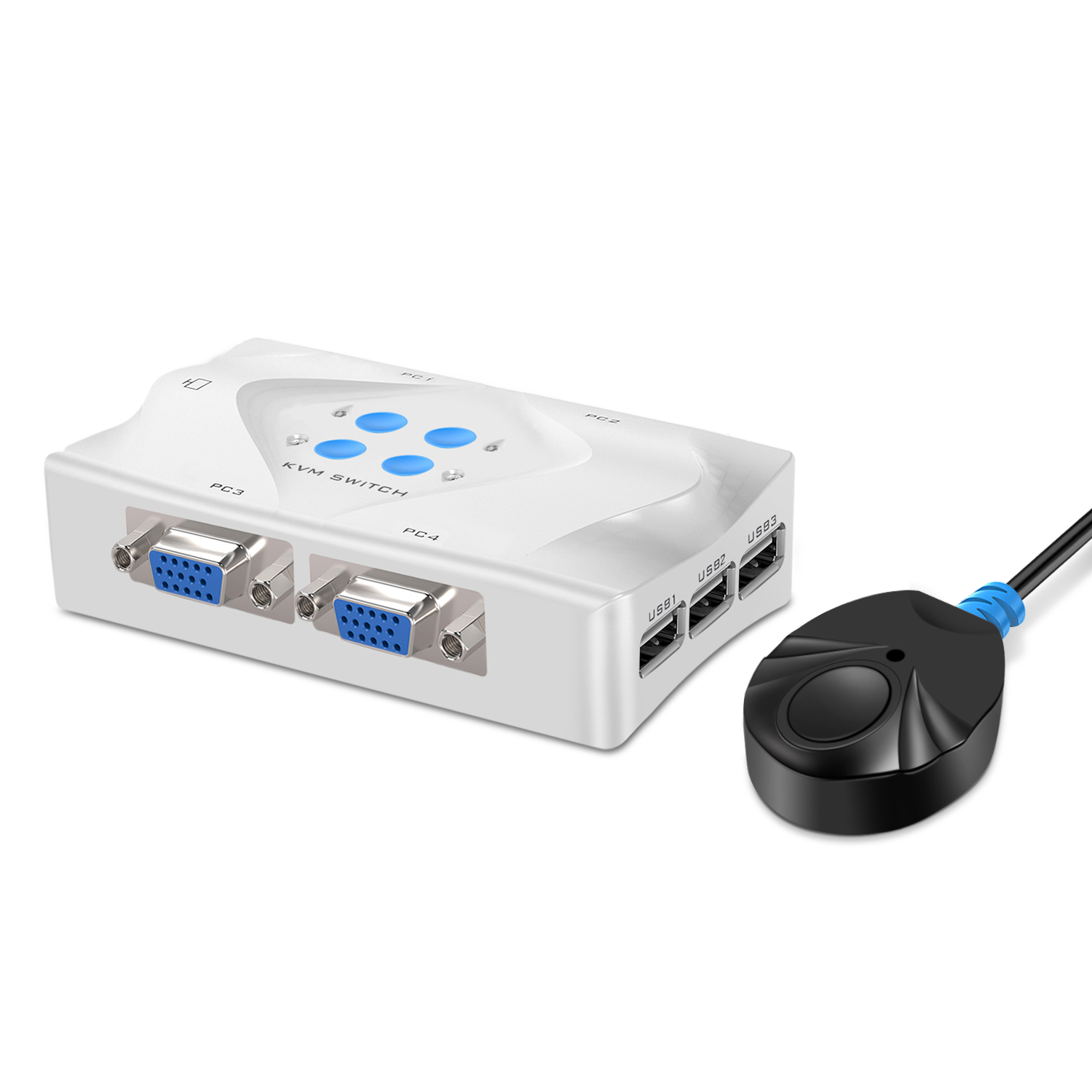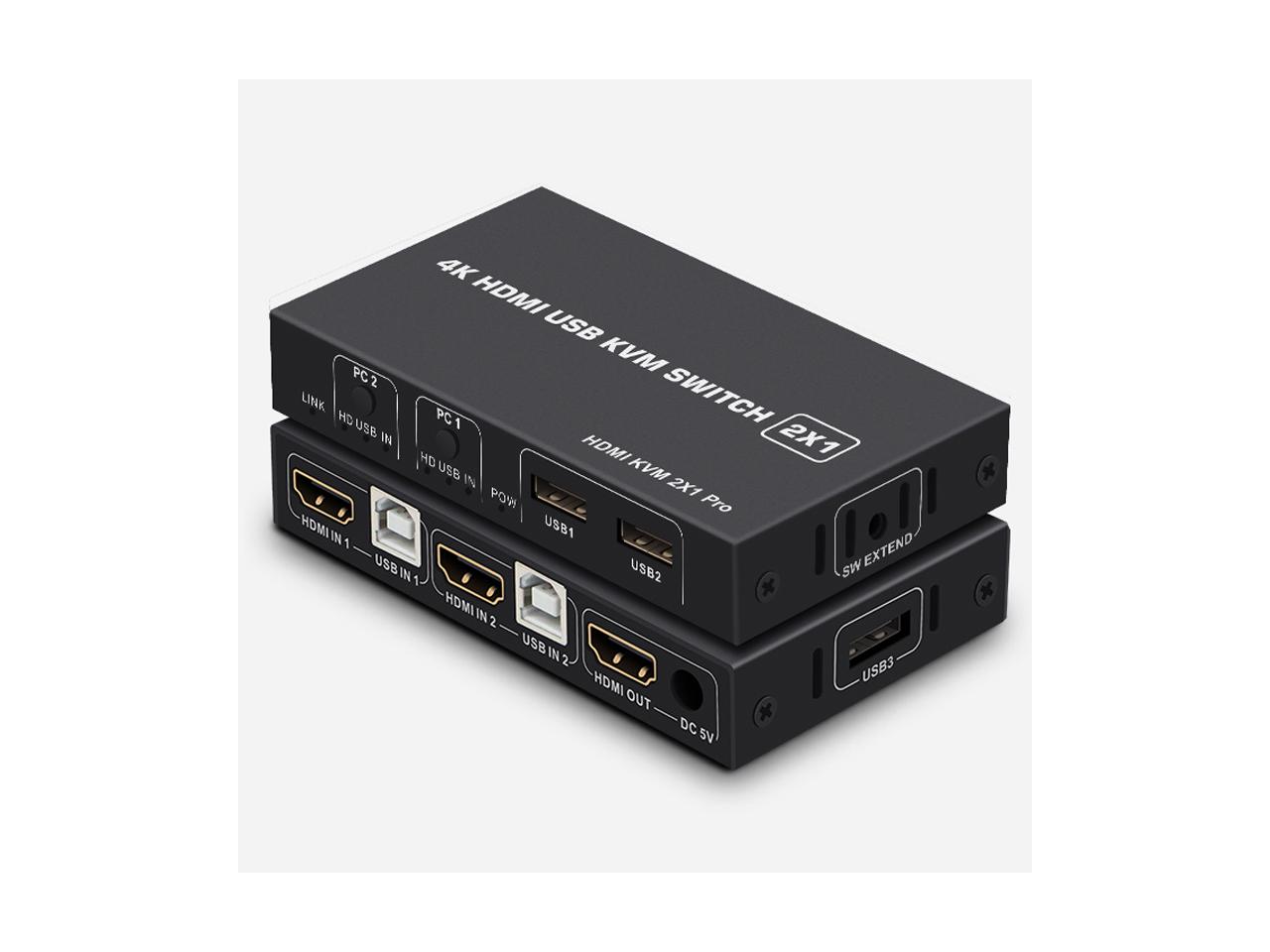

The latter means there will be fewer instances of opening phishing emails or tracking emails on company systems. The inclusion of a switch means users will be able to switch to their personal laptops for their work, whether it’s surfing through Facebook & Instagram or going through their emails on Gmail. The security aspect comes into the picture when you are using two different systems for work and home. You may need to switch to a basic mouse and keyboards to get things sorted, especially if you are facing any connectivity or performance issues. Secondly, not all switches can deal with the premium mouse and keyboards. However, there are a few things you need to take care of, like the quality of the HDMI cable and power cables. And depending on the device, you can assign a keyboard shortcut or hotkey to switch seamlessly between the systems, besides using the hardware switch. Cable KVM switches and USB KVM switches are the popular ones when it comes to simple home setups. There are quite a few types of KVM switches, depending on the type of function. Of course, there is more at work than just the system’s IP. For systems far apart, IP-based KVM switches do the deed of switching between two systems based on the remote IP connection. The good part is that the systems don’t necessarily have to be in one place. In some cases, you do not have to worry about charging the connected devices as well since the switch takes care of it.Īside from the above, KVM switches find use in server rooms, stock trading, and data centers. You can also hook your laptop and tablet to use a single keyboard and mouse between them. These switches make it easy to switch between your desktop workspaces.Īs noted earlier, KVM switches are not limited to desktop computers and are useful in many scenarios. At the same time, they have enough ports to let you plug in computer peripherals and leave room for more, especially for home setups. These devices are small and occupy very little space on the desk. KVM switches are hardware devices designed to switch between two or more systems efficiently. So, without further ado, let’s get started. Well, that’s what we will explore in this post today. All you need to do is flick a switch.Īs simple as it may sound, KVM switches are not cheap, and a quality switch with good connectors costs north of $50. And this brings us to an important question-are KVM switches worth buying? Or is the hassle worth the time? A lot depends on your needs.They remain plugged into your desktops and peripherals and make switching the peripherals between two desktops a hassle-free affair. Note that I don’t know of any that would work with the USB-C/Thunderbolt devices to monitors like the new Studio display. I think it was also DVI based and not HDMI but there may be a newer model that is HDMI native. It also used custom cabling so I’d have to use extensions if I needed longer runs. Since they’re standard, you can replace the short cables included with longer ones. They used standard cables: USB “printer” cables (A to B) for the keyboard/mouse connection and standard HDMI for video. Price wise the cheapies were both under $100 and included basic, if short, cables. In my case I have a rack that is behind me, so I have to turn to change. This may make more sense based on your configuration. Basically with some KVM there is a magic key combo, usually something like ‘control twice, then another key’ which switches devices without requiring hardware access. On my games machines some games don’t like this.


#Kvm switch for mac laptop and desktop windows#
On my work laptop this means all the windows and icons get shoved to one screen. Without this feature, essentially when you’re on device #4, then devices 1-3 think the monitor was disconnected. There are two big features you may care about:ĭisplay emulation has other names, and there’s adapters that promise to make it work but I’ve never gotten them working. I’m currently using another cheapie that works but is no frills.Īll three work acceptably and I will probably switch back to #2 after I move. No display emulation, but had a good hotkey support. I have a previous one that was slightly smaller and powered by the USB from device #1. One big feature is it does display emulation (keep reading) Worked fine, but I’ve gone through 3 KVMs in the last 4 years or so: Game machine (currently a RetroPi box, previously a Linux machine) Less elderly Mac mini (2012 acting as a server) Currently my home setup is a 4pot KVM connected to:Įlderly Mac Mini (2011 to be replaced once I move)


 0 kommentar(er)
0 kommentar(er)
